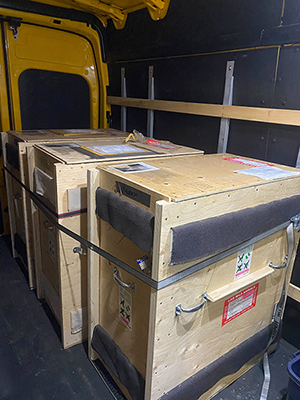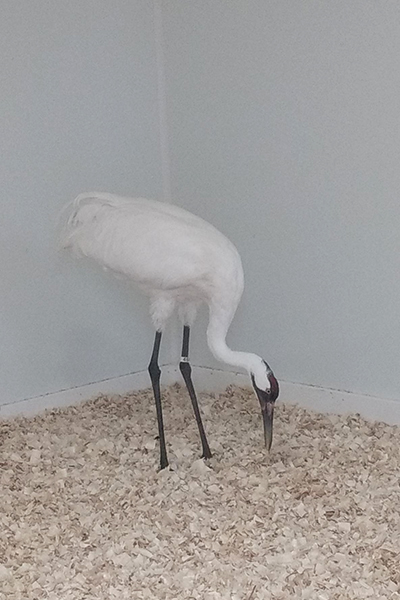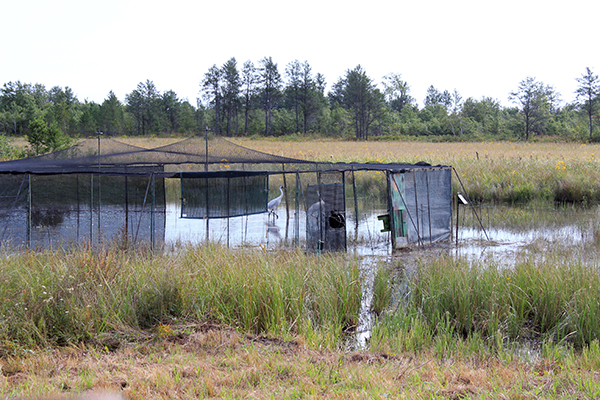Baraboo, Wisconsin – Three Whooping Cranes made an unconventional migration in late August, traveling via private planes and cargo vans from the Wilder Institute/Calgary Zoo (WICZ) in Alberta, Canada, to the International Crane Foundation’s headquarters in southern Wisconsin.

“Arranging for the transportation of the three Whooping Cranes was a joint effort between our staff and the WICZ for over more than a year,” noted Hillary Thompson, North America Program Crane Analyst for the International Crane Foundation.
But the hard work paid off when we could open the cranes’ traveling crates when we finally arrived in Wisconsin and see the birds take their first steps into their new homes,” continued Thompson.
Ruby, the oldest of the three cranes, hatched at the WICZ’s Wildlife Conservation Centre in July 2010. Ruby is joining the International Crane Foundation’s captive flock with the goal of adding her to the Foundation’s Whooping Crane breeding program. Sisters Kali and Daya hatched in 2021 at the centre and were both reared by adult Whooping Cranes, known as parent-rearing.
“We’re extremely happy to see that these Alberta-born cranes have settled into their new home in Wisconsin,” said Colleen Baird, Senior Manager of Animal Care at the WICZ. “Breeding endangered Whooping Cranes and hatching chicks is always challenging, but our team is proud to see that the various methods of hatching and rearing that we utilize have successfully boosted the wild population.”




The two yearlings were temporarily housed at the Necedah National Wildlife Refuge in central Wisconsin for a week to allow them to adjust to the move. The young cranes were released on September 6 near adult Whooping Cranes at the Refuge. Whooping Crane Reintroduction team members are monitoring the two young birds to ensure their safety as they learn about their new surroundings.
The duo was initially meant to be released in fall 2021. However, the ongoing Covid-19 pandemic and the emergence of avian influenza in North America in early 2022 resulted in the birds spending their first year in Calgary. Although they have missed their first year of migration, we’re hopeful they will naturally migrate with the other cranes.
In the 1940s, only 21 Whooping Cranes remained in the wild – the result of widespread hunting and habitat loss. Dedicated conservation efforts have dramatically improved the fate of these endangered birds in North America. Today, over 650 of these majestic birds are in the wild in four populations. The Aransas Wood Buffalo population is the only natural population that migrates between Canada and the United States. The three reintroduced populations are the Eastern Migratory Population and Louisiana and Florida non-migratory populations.
“It is through partnerships like this that give me hope for the species. By working together, we are returning Whooping Cranes to the wild to the eastern U.S. and protecting countless other species in the process,” shared Thompson.
Update: We are saddened to share that on September 19, 2022, our team recovered Kali’s body at the Necedah National Wildlife Refuge. The young crane likely was predated.
